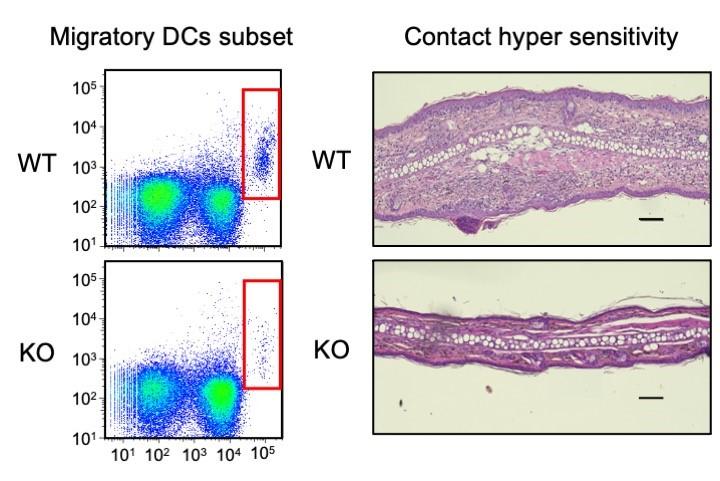Researchers from Osaka University reveal the molecular mechanism by which immune cells migrate and reach the site of infection
Osaka, Japan – In a new study, researchers from Osaka University discovered a novel molecular mechanism by which immune cells migrate to fight off infections. These findings may help in understanding the development of certain immune deficiency disorders and establish novel therapies against them.
“As simple as it sounds, cell migration is a highly regulated and complex process,” says first author of the study Takeshi Nakatani. “A lot of individual pieces of the cell have to come together to allow immune cells to move forward and travel to infected sites of the body. Lysosomes are compartments within cells that are connected to nutrient sensing and metabolism, and they have also been shown to be involved in cell motility. We wanted to understand how lysosomes regulate the process of immune cell migration.”
The researchers focused on a protein complex on lysosomes, called the Ragulator complex. To understand how the Ragulator complex regulates immune cell motility, the researchers used isolated dendritic cells. These cells take up microbial invaders and bring them to other immune cells in lymph nodes to activate an immune response. The researchers found that when the Ragulator complex interacts with a protein called MPRIP (myosin phosphatase Rho-interacting protein), it prevents the protein MLCP (myosin light chain phosphatase) from blocking the phosphorylation of myosin proteins, resulting in cell contraction. In doing so, the action of the Ragulator complex can be seen as a ‘brake-release’.
Interestingly, the researchers found that cells migrate by repeated cycles of protrusions of their front and contraction of their rear, leading to a forward movement. However, in the absence of the Ragulator complex, cell contraction did not occur. In experiments with animals, the researchers found that without the Ragulator complex, dendritic cells cannot travel from peripheral tissue to lymph nodes, which results in an impaired immune response.
“These are striking results that show how the lysosomal Ragulator complex is involved in the migration of immune cells in addition to its functions in cellular metabolism. Our study revealed a novel molecular mechanism by which immune cells migrate and elicit a proper immune response. These findings could help develop novel therapies against autoimmune diseases as well as better vaccines and anti-cancer drugs,” says senior author of the study Hyota Takamatsu.
###
The article, “The lysosomal Ragulator complex plays an essential role in leukocyte trafficking by activating myosin II” was published in Nature Communications at DOI: https:/
About Osaka University
Osaka University was founded in 1931 as one of the seven imperial universities of Japan and is now one of Japan’s leading comprehensive universities with a broad disciplinary spectrum. This strength is coupled with a singular drive for innovation that extends throughout the scientific process, from fundamental research to the creation of applied technology with positive economic impacts. Its commitment to innovation has been recognized in Japan and around the world, being named Japan’s most innovative university in 2015 (Reuters 2015 Top 100) and one of the most innovative institutions in the world in 2017 (Innovative Universities and the Nature Index Innovation 2017). Now, Osaka University is leveraging its role as a Designated National University Corporation selected by the Ministry of Education, Culture, Sports, Science and Technology to contribute to innovation for human welfare, sustainable development of society, and social transformation.
Website: https:/
Media Contact
Saori Obayashi
[email protected]
Original Source
https:/
Related Journal Article
http://dx.





